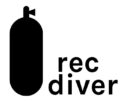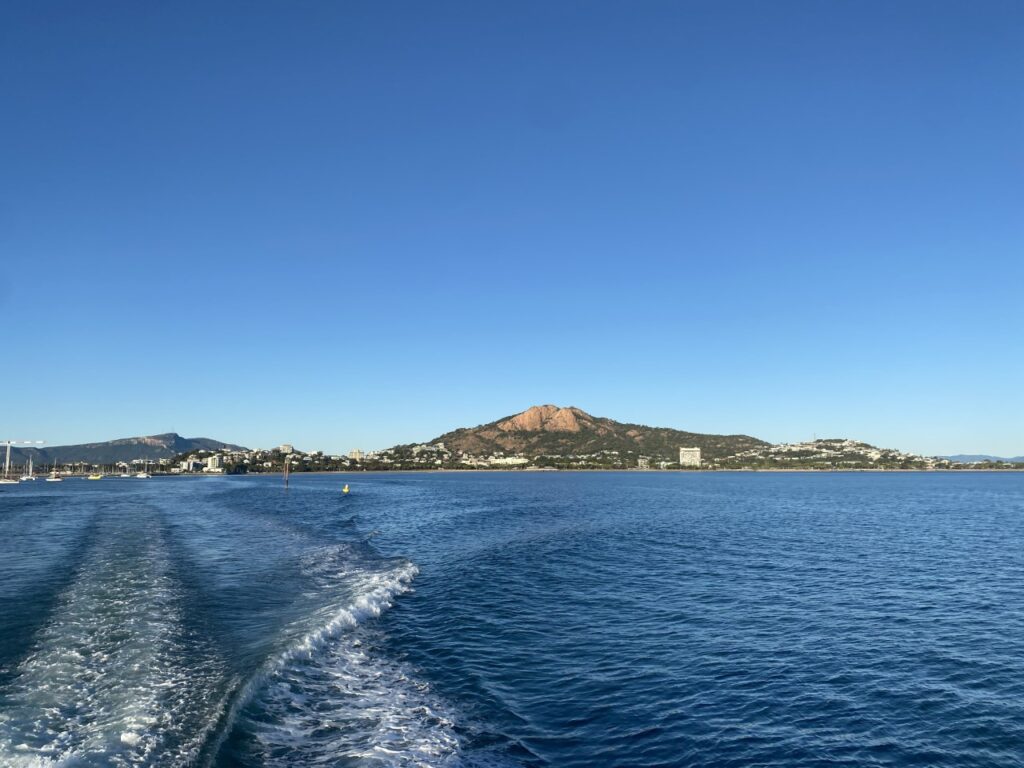
My latest roster was released and with three days free of work, I couldn’t help myself. It was time to tick off another bucket list dive – the SS Yongala. Located off the coastal town of Ayr in North Queensland, it is described as one of the worlds best wreck dives. That in mind, I made all the essential bookings and travel arrangements. The plan was to board the dive boat in Townsville and make the journey to the wreck for a day trip consisting of two dives. As fate would have it the week before the dive, the company running the day cancelled the trip citing boat serviceability. I was devastated, however this turned out to likely be a blessing in disguise. Emotionally I was already committed to going diving and was determined to get into the water one way or another.
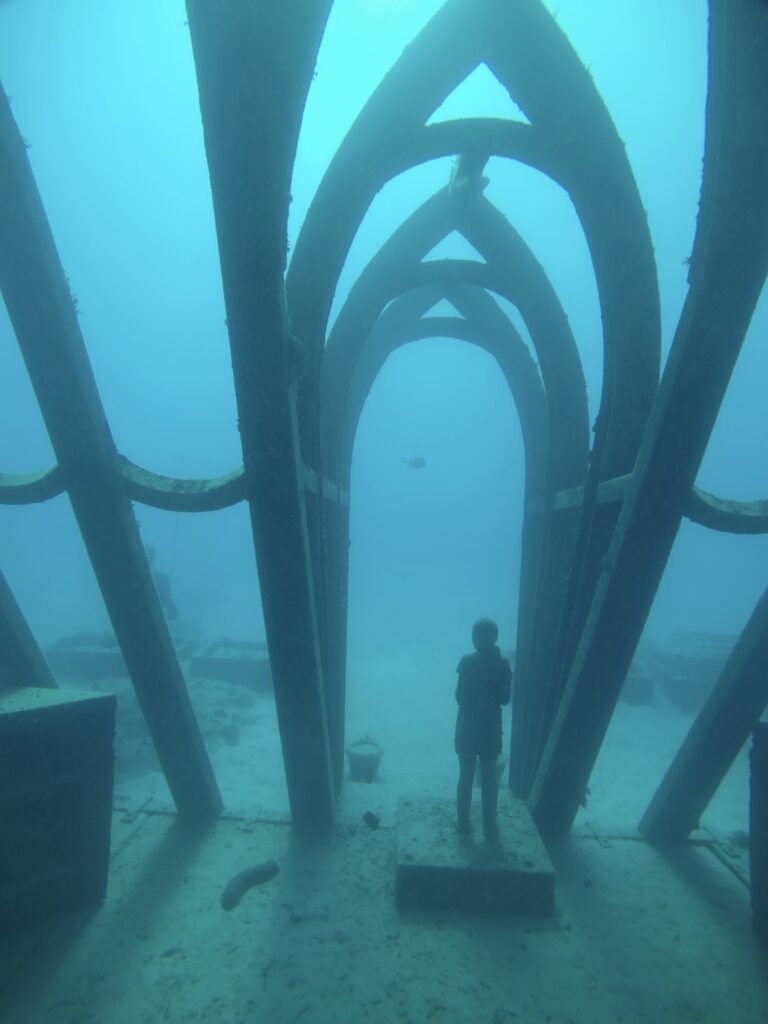
As luck would have it the company I planned the original dive with was running a day trip for the same day albeit on a different boat to a different location; the Museum of Underwater Art (MOUA) at John Brewer Reef. Although not the dive I had hoped for, I did a bit of research and decided it would be a unique experience and somewhere new to explore.
The boat ride out to the MOUA on the Great Barrier Reef takes two and a half hours with a quick stop at Magnetic Island. Once on the reef, it’s a quick leap and eighteen meter descent down the guide line to the greenhouse. The museum is located within the protection of the reef on a sandy section of sea floor. Visibility was about ten to fifteen meters which seems to be standard for this site.
MOUA consists of large greenhouse structure with open walls and roof. As such the building can be viewed both internally and externally. Inside are two benches running down the long sides of the greenhouse with human sculptures standing in front of various artifacts. This gives the impression of someone once working now frozen in time. Hanging from the ceiling is a chandelier close to the main entrance on the short side of the greenhouse that guides you away from the centre and down the sides during the swim through. Scattered around the greenhouse are other structures like artificial plants and statues that help to occupy the broader space and bring the area to life. Swimming through the greenhouse and around the outside whilst looking at the sculptures takes around fifteen minutes.
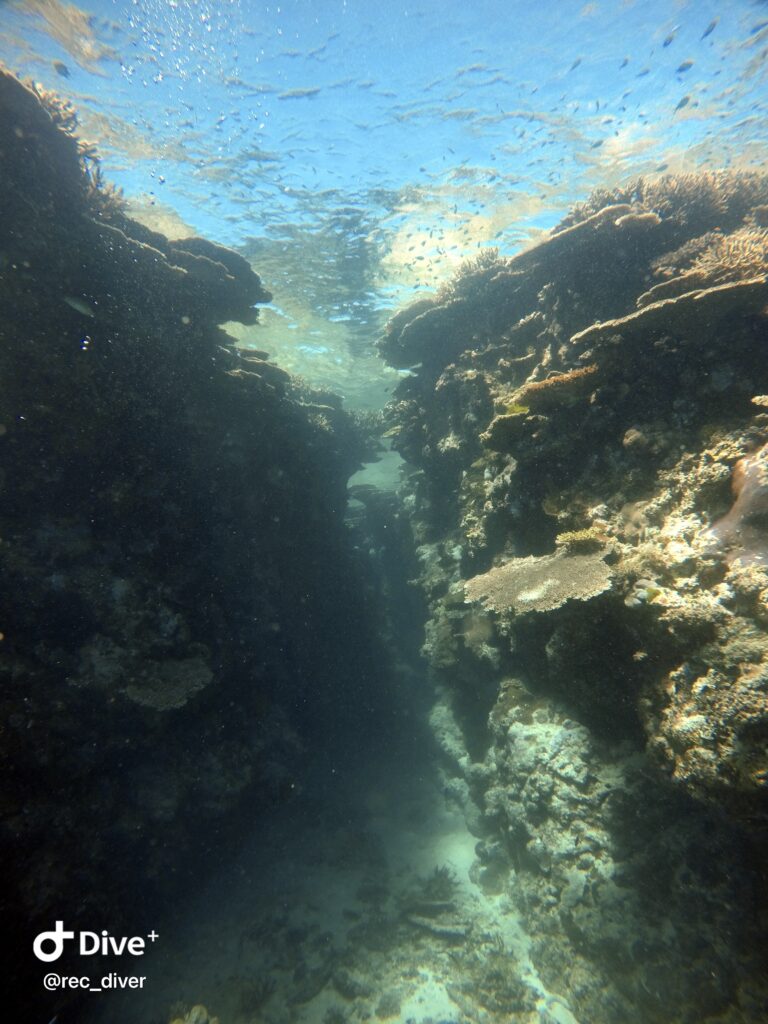
Exiting the museum to the north east is a garden consisting of evenly spaced lines of sculptured plants. Following the garden up the centre guides you up to a channel in the reef with the option to turn either left or right. Large coral cliffs around fifteen meters deep wind around the area leaving plenty to explore. Deep horizontal recesses, overhangs and swim throughs hide an abundance of marine life and make this site a really fun place to dive. My dive buddy and I were lucky enough to see an enormous lemon shark, black tip reef shark, nudibranchs, groupers, large pelagics, a beautiful hanging sea fan as well as the healthiest coral I’ve seen on the Great Barrier Reef.
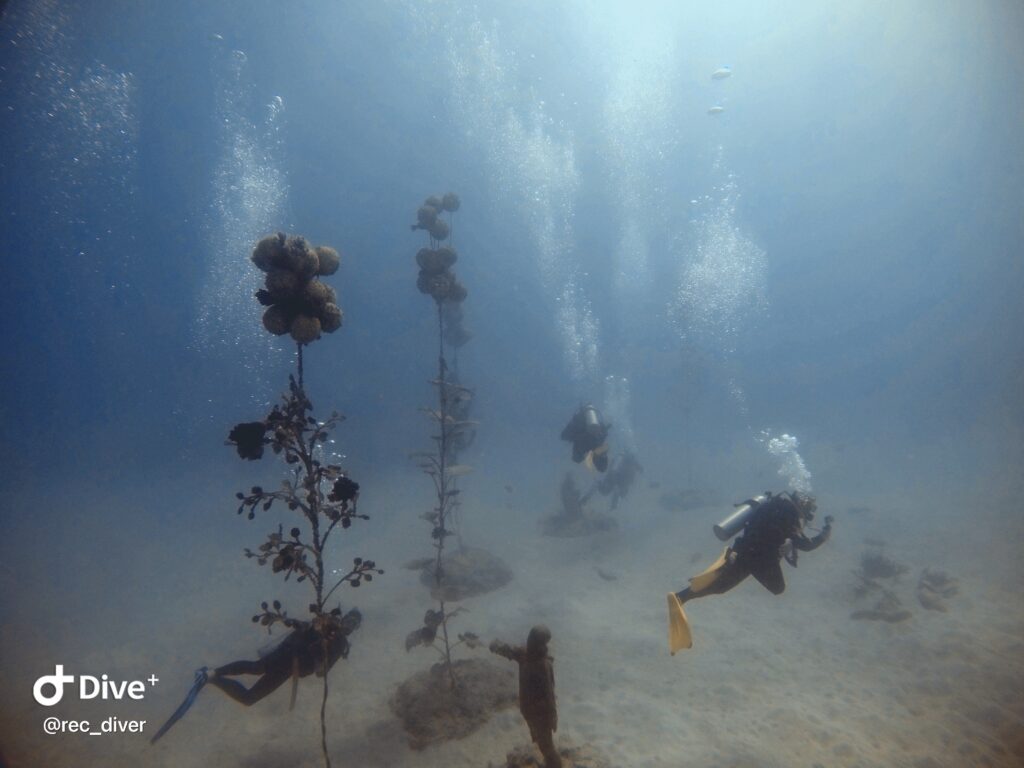
I mentioned earlier that I was initially disappointed about not being able to dive the Yongala, but my fortunes were about to change. Toward the end of the channel I heard the distant but unmistakable sound of whales. Once outside and passed the protection of the reef the songs grew louder. Their performance carried on across both dives for what was almost two hours underwater. This had to be one of the most beautiful experiences I have had as a diver, and definitely the highlight of the trip. On the way back to shore the boat stopped as we passed a couple of humpbacks playing in deeper water. It was amazing to see these singing gentle giants up close.
MOUA and John Brewer reef was a fun dive despite it not being what I had initially planned. The greenhouse and statues are unique, however only complimentary to the marine habitat that surrounds. The real drawcard for the location is the wildlife and coral, which is some of the best on Australia’s East Coast. The depth of this site means that the majority of the reef is accessible to both snorkelers and scuba divers alike.
